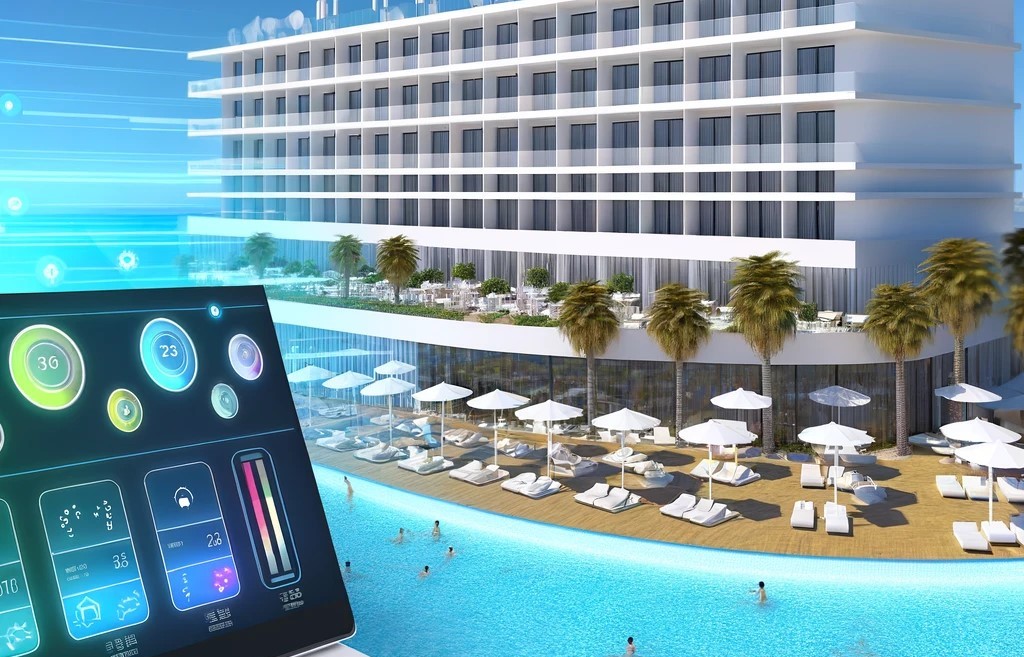The acronym BMS stands for Building Management Systems and refer to intelligent building management systems. Often, the BMS systems are integrated with automation systems, i.e., they are home automation and control go hand in hand to, among other benefits, improving energy efficiency of the installations of a building or dwelling.
Nowadays, it is becoming more and more common to think of engineering and construction projects in a holistic way, looking for solutions to solve aspects such as the necessary energy transition in the building sector from the projection to the end of the building's useful life. BMS systems play a very important role in optimizing the use of facilities, which not only results in significant energy savings, but also has other advantages.
What are BMS systems?
Building management systems are also sometimes referred to in the industry as BAS (Building Automation Systems), DDC (Direct Digital Control) or often BMCS (Building Management and Control Systems). In any case, even if BMS systems are used as a more generic term, it is worth bearing in mind that the term "building management and control systems" is not a new one. direct relationship between building management and automation and control of the facilities, which is explicitly stated in other designations.
BMS systems can be defined as control systems that are used to monitor and manage the electrical, mechanical or electromechanical applications of a building. A basic BMS planning includes the building management software and various devices equipped with intelligent sensors capable of collecting data and sending it to the central system. The data is stored and checked against a set of predefined parameters to ensure that it is maintained. This set of software and hardware for data monitoring and control is often referred to as SCADA (Supervisory Control and Data Acquisition).
The objective is to have a centralized data system from where you can ensuring safety of the facilities, it is offered comfort and well-being, and optimize efficiency and use of the devices or subsystems that are monitored with BMS technology.
Types of BMS systems
There are various subsystems that can be controlled with BMS technology. One of the most common is the HVACThe BMS system controls the heating, ventilation and air-conditioning (AC) systems. The humidity, temperature or atmospheric pressure of the rooms is monitored by the BMS system so that if certain limits are exceeded, an alarm is triggered.
Other systems that can be controlled with centralized management software include the following. smoke extractors or the dust collectorsIn these cases, the BMS system can warn of possible failures or identify units that require specific maintenance.
BMS systems are also used to manage the DHW circuits (domestic hot water) or cold water. Here, in addition to temperature control, distribution and other aspects such as water pressure are monitored.
In buildings managed by BMS, it is also common to monitor the electrical installation, from consumption to the condition of sockets and switches.
As for the lighting control, BMS systems are usually combined with intelligent lighting systems that have their own control and monitoring technologies, e.g., the protocol or Dali system.
How BMS technology contributes to energy efficiency in buildings
It is estimated that the subsystems that can be managed by BMS technology account for approximately 40% of a building's energy consumption; a percentage that approaches 70% if lighting is included. However, one of the main advantages of implementing BMS systems for the management of a building's installations is the improvement in energy efficiency.
Real-time monitoring of BMS systems provides us with data that help us to make a more efficient use of the installations. This information enables us to program the systems to be more productive with fewer resources, which means a energy savings and cost reduction.
This cost reduction is not only at the operational level, but also in the investment in these systems. The control provided by a BMS offers a global vision of the operation of the subsystems, but also of each of their components. Thus, with the monitoring of these elements and the data analysis, preventive maintenance is encouraged. It is easier to detect possible deficiencies, prevent failures and extend the service life of the systems.
In addition to energy savings due to the efficient use of the systems and their maintenance, there is also an improvement in the quality of life. Cost reductions and efficiency also serve to offer greater well-being to the people who live in buildings managed by BMS systems. In addition, keeping them in good working order means offering comfort and safe and healthy conditions.
At TALAT we are specialists in designing and implementing customized BMS systems for each project. We have developed our own systems for the digitalization and intelligent management for various projects, some of them even on a large scale such as the Rafa Nadal Tennis Center or with a high level of technological innovation, as in the hypogeum realized for the new Santiago Bernabéu Stadium.
These are just a few examples of the jobs in which we have introduced BMS systems. If you want to learn more or see how this intelligent management software can help you in your project, contact our team and we will be happy to assist you.

